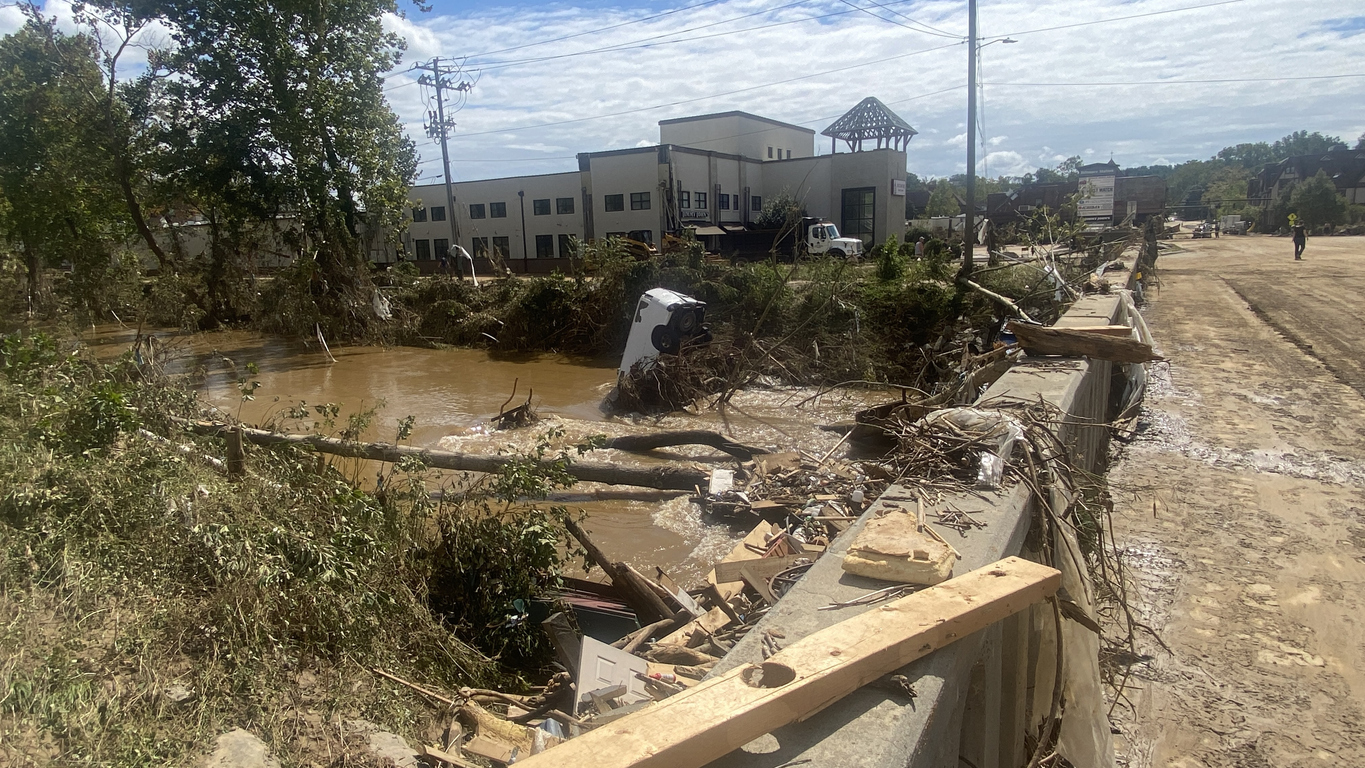Hurricane Helene has become the deadliest hurricane since Katrina, and property damage from the Category 4 storm could be as high as $26 billion, according to estimates from Moody’s Analytics. Insured losses could reach roughly $6.4 billion, according to an early estimate from catastrophe modeling firm Karen Clark & Company (KCC), covering wind, storm surge, and inland flooding damage across nine states.
These estimates are continually being updated. According to AM Best, the final magnitude of losses will depend on the extent of wind versus flood damage and any business interruption losses that may arise.
Helene’s Path and Its Impact
Helene inflicted more wind damage in Georgia than Florida and the most devastation from inland flooding in North Carolina, according to KCC, exposing a growing threat: the vulnerability of inland areas to flooding, even when far removed from coastal regions.
Inland regions across Georgia and North Carolina saw unprecedented rainfalls, triggering widespread flooding in multiple communities. These areas, traditionally not seen as high-risk flood zones, faced challenges in managing the excessive water, causing significant property damage, infrastructure failures, and tragic loss of life.
Central and northern parts of Georgia, including cities like Macon and Augusta, experienced severe flooding due to overwhelmed rivers and creeks. In inland areas in North Carolina, cities such as Fayetteville and Raleigh experienced rivers like the Cape Fear and Neuse swell far beyond their banks, damaging homes, businesses, and agricultural land.
Factors Behind Inland Flooding
Hurricane Helene underscored the reality that inland flooding is becoming a growing risk. As hurricanes and tropical storms carry more moisture due to warming seas, they can dump heavy rainfalls on the coast and hundreds of miles inland.
Several factors contribute to this increasing risk:
- Changing Rainfall Patterns: Helene brought excessive rain, which overwhelmed drainage systems and rivers. Many inland areas are not designed to cope with the extreme rain that hurricanes now frequently bring.
- Outdated Infrastructure: In regions like Georgia and North Carolina, much of the infrastructure—roads, bridges, and drainage systems—was built decades ago, before extreme weather patterns became the norm.
- Development in Flood-Prone Areas: In both states, rapid development in floodplains and near rivers has increased the vulnerability to flooding. Many communities have been built in areas historically considered low-risk, but these regions are now facing flood threats due to the increasing intensity of storms like Hurricane Helene.
The Call for Better Flood Preparation
The inland flooding from Hurricane Helene has led experts to call for improved flood management and planning in regions not typically considered high-risk. Some key areas of focus include:
- Updating Flood Maps: Many areas affected by Helene’s flooding were not previously identified as high-risk. There is a growing call for flood maps that reflect today’s more frequent and intense rainfall events.
- Investing in Infrastructure and Adopting Modern Building Codes: Outdated drainage systems and roads contributed to the severity of flooding in many areas. Investment in infrastructure upgrades will be critical to better managing future storms. Additionally, some commercial buildings in Georgia and North Carolina impacted by Hurricane Helene may not have fully adhered to modern building codes, especially in flood-prone areas.
- Community Awareness: As storms like Helene demonstrate the growing inland flood risk, there is a need to increase public awareness and encourage individuals and businesses to purchase Flood insurance, even in areas not traditionally considered at risk.
About Seneca Insurance Company
Seneca Insurance Companies are known for having a broad appetite for writing property risks. We offer admitted and non-admitted ISO-based policies, with catastrophe perils based on location and risk characteristics.

